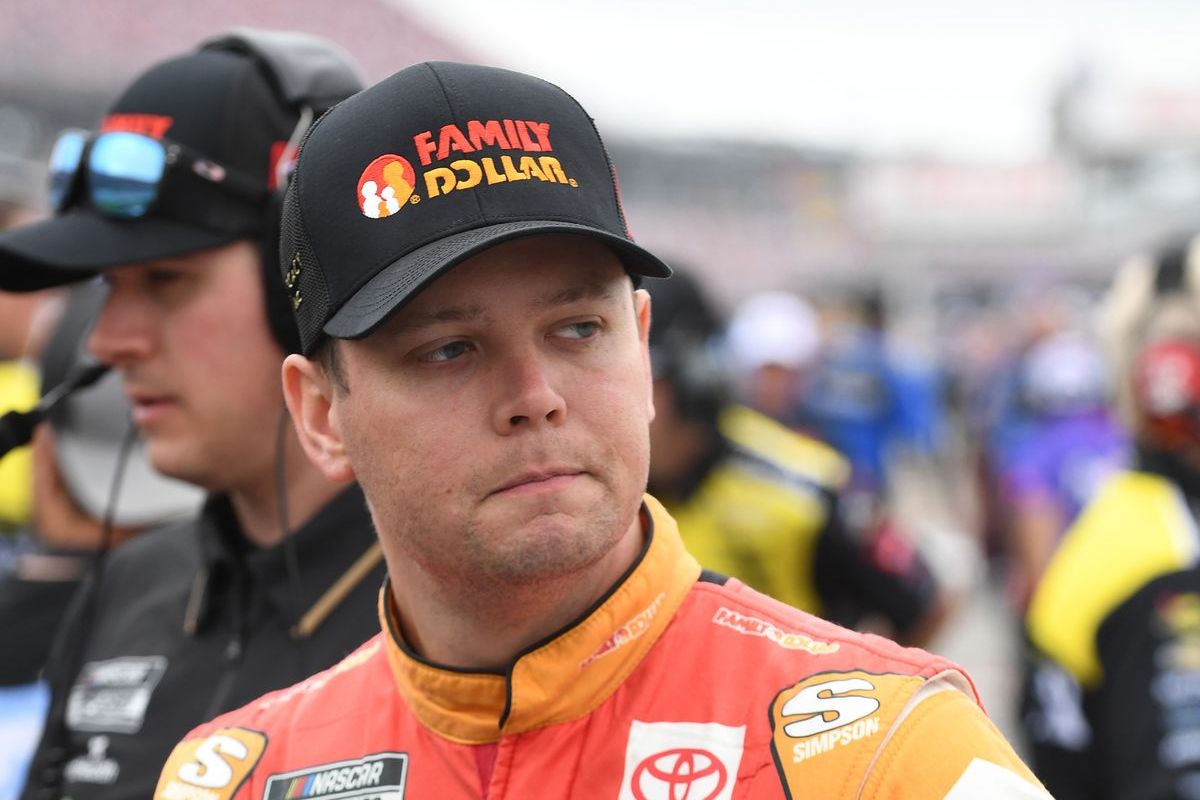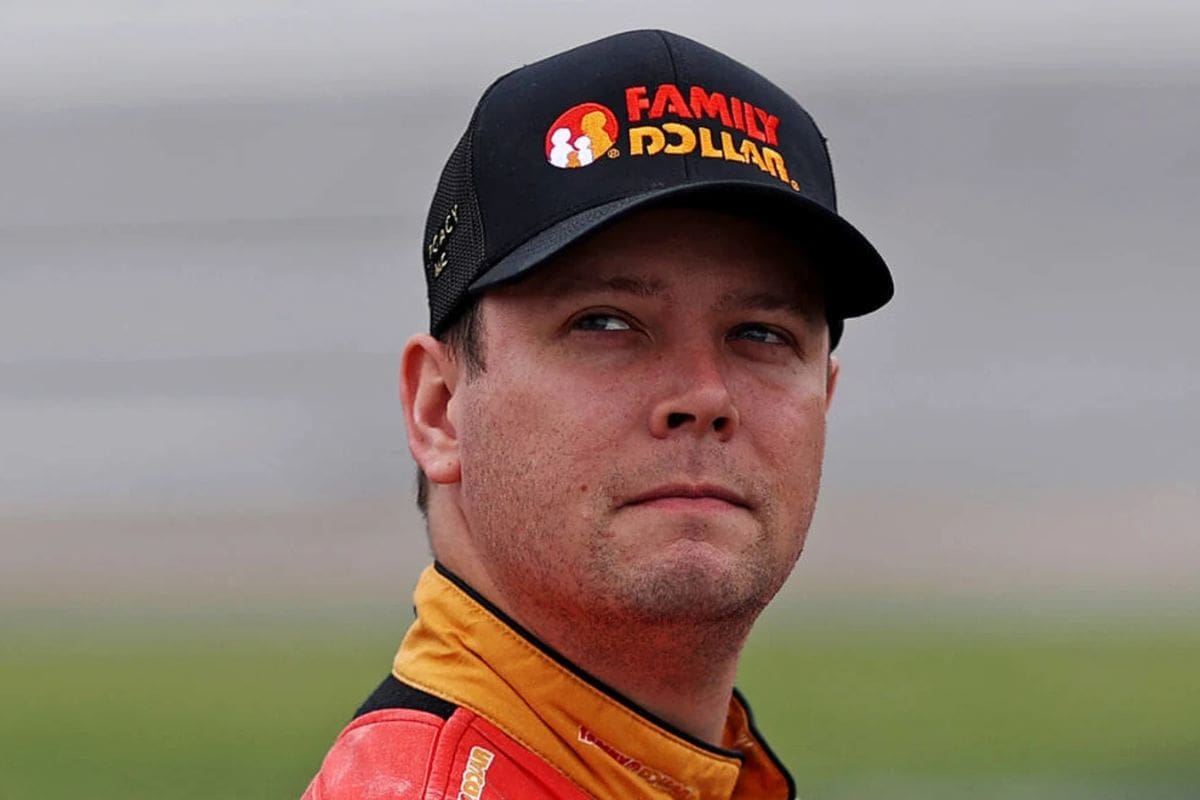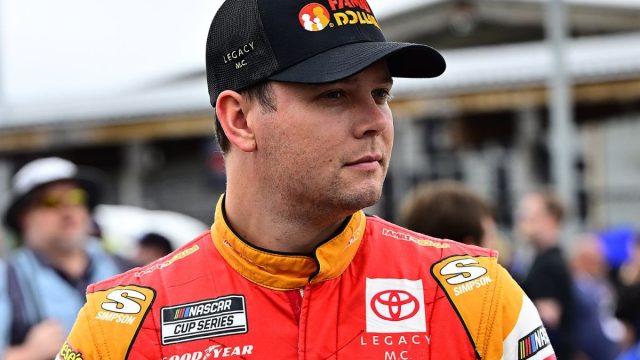Erik Jones’ Nightmare: Erik Jones‘ challenging crash at Talladega not only highlighted the risky nature of motorsport but also set the stage for an extraordinary narrative of resilience and recovery. Suffering a lower vertebrae fracture, Jones faced a demanding path filled with specialized medical treatments and rigorous physical therapy. Confronted with physical and emotional hurdles, he demonstrated a steadfast resolve to return to the track. This experience, marked by incremental progress and community support, reveals the intricate interplay between mental fortitude and physical rehabilitation.
Key Highlights
- Erik Jones’ violent crash at Talladega resulted in a lower vertebrae fracture.
- Intensive physical therapy and medical interventions were crucial in Erik’s recovery.
- Emotional and mental support from family and community played a vital role.
- Adjustments to Erik’s driving technique and car setup were necessary post-injury.
- NASCAR’s ongoing safety innovations are pivotal in preventing similar future injuries.
Erik Jones’ Terrifying Crash at Talladega: The Aftermath
Amid the electrifying atmosphere of the 2024 Talladega race, Erik Jones’ bone-compressing crash not only stunned spectators but also set the stage for a grueling battle against a severe spinal injury that would test his resilience and perseverance. The incident unfolded with alarming rapidity, as Jones’ car collided violently against the barrier, producing a cacophony of sounds that echoed through the stands. Despite the immediate shock, Jones managed to extricate himself from the wreckage and walk away, leading many to believe he had miraculously escaped without significant harm.
However, the initial relief was short-lived. Subsequent medical evaluations at the NASCAR care center revealed a compressed fracture in Jones’ lower vertebrae, a diagnosis that transformed relief into a profound concern. The nature of the injury necessitated a stringent and methodical approach to recovery, requiring Jones to confront physical limitations and pain that were as challenging as the crash itself.

The aftermath of the accident saw Jones undertaking a recovery process. The compressed fracture presented unique challenges, demanding a regimen of specialized medical interventions and physical therapy sessions designed to restore mobility and strength. Each step of this experience required resolute determination and an indomitable spirit, qualities that Jones had to summon consistently.
Interview with Erik Jones: A Glimpse into His Road to Recovery
In an open and insightful interview with NASCAR FOX reporter Bob Pockrass, Erik Jones delves into the multifaceted path of his recovery, shedding light on the physical, emotional, and psychological dimensions of his rehabilitation. Jones’ narrative is one of resilience and resolve, as he carefully recounts each phase of his progression back to full strength.
Jones revealed that he has been feeling fully recovered for the past three weeks, marking a significant milestone in his healing process. His commitment to physical recovery is evident in his disciplined return to gym activities, which he has been able to undertake without any lingering effects. However, his road to recovery transcends mere physical rehabilitation. He emphasized the importance of regaining confidence and comfort behind the wheel, which is vital for any driver who has experienced a traumatic event.
“I’ve felt 100% now for really the last three weeks. I’m back in the gym doing what I was doing before as far as lifting weights and it don’t have any lingering effects.” – Jones
- Physical Rehabilitation: Intense physiotherapy sessions and a structured workout regime that focused on rebuilding strength and agility.
- Mental Fortitude: Psychological counseling to address trauma, coupled with mental conditioning techniques to boost focus and resilience.
- Emotional Support: A robust support system comprising family, friends, and the racing community, which played an integral role in lifting his spirits and keeping him motivated.
Adjustments and Readjustments: Erik Jones’ Return to Form
Navigating through the complexities of his comeback to racing, Erik Jones carefully adjusted both his physical posture and driving techniques to accommodate his post-injury condition, showcasing remarkable adaptability and resolve. These adjustments were not mere superficial tweaks but vital recalibrations to guarantee his safety and performance on the track. Jones painstakingly modified his sitting position within the car, a fundamental change that demanded a reconfiguration of his muscle memory and reflexes honed over years of competitive driving.
“Darlington I had a ton of stuff different. I changed a couple more things after that before Charlotte. But now I would say I’m more comfortable now than I’ve ever been.” – Jones
The adjustment process extended beyond physical alterations. Jones had to refine his driving approach, adopting new strategies to mitigate any lingering physical limitations and to prevent aggravating his injuries. This entailed a deep understanding of his body’s new boundaries and learning to anticipate how his altered biomechanics would interact with the car’s dynamics. Such a transformation required not just physical adaptation but also a significant mental shift, necessitating heightened focus and strategic thinking.
“When you’re used to sitting one way for a long time and feeling certain things, it’s a pretty big shift. So it took me a couple of weeks to get used to that, a couple of weeks to change a couple of things to feel really good in the car.”
“Gateway I thought was actually some of a test. Just there was so much heavy breaking and shifting there. Obviously, there was some stress on it and it felt okay.” – Jones
Jones’ journey back to form highlights the resilience and mental fortitude intrinsic to professional racing. His ability to seamlessly integrate these adjustments into his racing routine speaks volumes about his commitment and expertise. The period of adjustment was undoubtedly challenging, yet it became a testament to his steadfast dedication to his craft.
Erik Jones said he has been back in the gym and his back is feeling good. He said Gateway was a good test for it because of the amount of heavy braking and shifting leading into his first road course after his injury. pic.twitter.com/FKwWVQy3oB
— Bob Pockrass (@bobpockrass) June 6, 2024
Moreover, Jones’ experience serves as a reminder of the necessity for adaptability within the NASCAR. His story is a compelling narrative of how overcoming physical adversity can lead to refined skills and perhaps an even greater appreciation for the sport.
“I think the care center reacted perfectly. It was not much he could have done differently in that moment. I think everybody did a great job.” – Jimmie Johnson

NASCAR’s Commitment to Safety: Evaluating Past and Present Measures
The evolution of safety measures in NASCAR show a relentless pursuit to protect drivers, driven by both technological advancements and lessons learned from past tragedies. The tragic death of Dale Earnhardt Sr. in 2001 was a turning point, catalyzing significant changes in the sport’s safety protocols. Since then, NASCAR has continually refined its approach to driver safety, integrating new technologies and engineering solutions to mitigate risks on the track.
- HANS Device: The Head and Neck Support device, introduced post-Earnhardt’s accident, has become mandatory, greatly reducing the risk of fatal head and neck injuries.
- SAFER Barriers: The Steel and Foam Energy Reduction barriers, implemented at tracks nationwide, absorb and decrease impact forces during crashes, protecting drivers from severe injuries.
- Car of Tomorrow (COT): Debuted in 2007, the COT featured enhanced structural integrity, energy-absorbing materials, and improved driver cockpit design, setting a new standard for car safety.
Despite these advancements, incidents like Erik Jones’ harrowing crash at Talladega highlight the ever-present need for vigilance and innovation in safety measures. Jones’ accident emphasized the importance of continuous improvements in car design, track infrastructure, and emergency response protocols.
Looking Ahead: Enhancements in Next-Gen Car Safety
Advancing beyond previous innovations, the Next-Gen car incorporates state-of-the-art materials and engineering solutions designed to improve driver safety to unprecedented levels. Despite the strides made in safety technology, incidents like Erik Jones’ crash highlight the need for continuous improvement. NASCAR’s Senior Director of Safety Engineering, Dr. John Patalak, asserts that ongoing improvements are crucial to mitigate future accidents and safeguard drivers.
“That’s really a never-ending process for us.” – Dr. John Patalak
Central to these advancements is the integration of carbon fiber construction—a material renowned for its exceptional strength-to-weight ratio. This allows the vehicle to withstand severe impacts while minimizing the transfer of force to the driver. Complementing the carbon fiber are energy-absorbing foams strategically placed within the car’s structure. These foams are designed to deform under impact, absorbing and dissipating energy that would otherwise reach the driver, thereby reducing the risk of injury.
NASCAR announces significant safety updates to the Next Gen car following the crash involving the Nos. 5 and 41 cars at Talladega.
These changes are set to debut at Atlanta Motor Speedway. pic.twitter.com/bPoOGMRSGb
— NASCAR (@NASCAR) June 8, 2023
Moreover, the implementation of enhanced crash data analysis systems enables engineers to scrutinize every detail of an incident. This data-driven approach allows for precise adjustments to car design, ensuring that each iteration of the Next-Gen model addresses previous vulnerabilities. Dr. Patalak emphasizes that continual evaluation is crucial, as it drives the iterative process of refining safety features based on real-world crash data.
“Sometimes we have opportunities to be proactive, like the laminate windshield. That wasn’t necessarily tied to one specific incident where we were responding to an injury or an issue, but it was an opportunity we saw and realized that with the technology we have available to us we could make that part better and safer.” – Dr. Patalak
The commitment to driver safety by NASCAR is evident through these ongoing innovations. By leveraging cutting-edge materials and data analytics, the Next-Gen car represents a significant leap forward in protecting drivers. However, as Dr. Patalak suggests, the path of safety enhancement is ongoing, requiring relentless dedication to technological advancement and rigorous testing to achieve optimal performance and security on the racetrack.

News in Brief: Erik Jones’ Nightmare
Erik Jones’ path from a devastating crash at Talladega to his eventual return to racing exemplifies the profound challenges and resilience needed in motorsport.
The thorough medical care and rigorous physical therapy highlighted the multidisciplinary approach to recovery.
Jones’ adaptations in driving technique reflect the dynamic interplay between physical limitations and adaptive strategies.
This case reinforces the ongoing necessity for advancements in car safety and the steadfast resolve required to overcome significant adversity in competitive sports.
Our Reader’s Queries
Q. How many wins does Erik Jones have?
A. Erik Jones has secured victory in three races, earned 89 top-ten finishes, and clinched two pole positions.
Q. Is Erik Jones married?
A. During this time, our thoughts are with Erik and his wife, Holly. They have our complete support.” LEGACY M.C. intends to seek a medical waiver for Jones to maintain eligibility for the 2024 NASCAR Cup Series playoffs.
ALSO READ: Erik Jones Shares Positive Update After Near-Fatal Wreck
